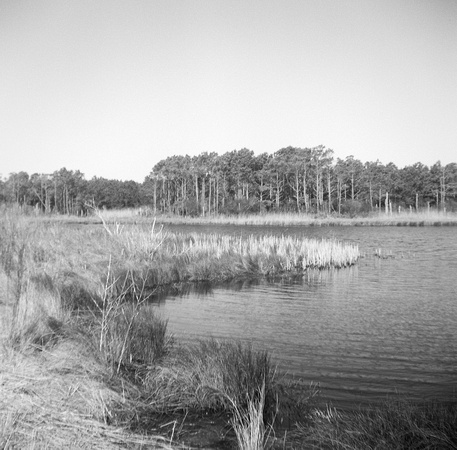Five Life Lessons from a Brownie Camera
Introduced in 1900, the Kodak Brownie was aimed at getting people interested in photography and sold for $1.00, which included film and processing. Essentially a cardboard box with a plastic lens, this simple design revolutionized photography and allowed people from all walks of life to enjoy taking pictures. My Brownie, the Hawkeye Flash Model, was introduced in the 1950s. Retaining the same simplicity as its earlier design, the Hawkeye Flash features a Bakelite plastic body, a rudimentary viewfinder, and the ability to use a flash.
Using this camera in the age of digital technology has been somewhat of a breath of fresh air, and taps into a creative spark that I find quite enjoyable. Along the way it has reinforced some life lessons that continue to have an impact on my photography and day-to-day life.
Life Lesson #1 - Simplicity Kodak Brownie cameras couldn’t be simpler - to take a picture, just compose your subject and press the shutter button, which is the only control on the camera. No need to worry about complex electronic or mechanical elements. In life the simple moments are the things to be treasured. A walk on the beach, a dog wagging its tail, time spent with friends and loved ones. The simple joys of life, often overlooked, are what’s truly important.
Life Lesson #2 - Limitations There is no zoom, no settings dial, the image seen in the viewfinder doesn’t exactly line up with the lens, and no focus control whatsoever. Not too many options with this camera. However, these limitations can enhance creativity since creative projects often thrive on constraints. We all have limits to what we can or cannot do, but that shouldn’t prevent us from pursuing whatever it is that speaks to our soul. As Teddy Roosevelt once said, “Do the best you can with what you have where you are.”
Life Lesson #3 - Blemishes With today’s technology even the simplest of cameras deliver image quality only dreamed of decades ago. Photos from the Brownie often have out of focus elements, lens flare, and light leaks that, depending on your perspective, either ruin a picture or give it something unique. I like to think of them as having character and being perfectly imperfect. Wabi-sabi, a traditional Japanese aesthetic, is a beauty described as “imperfect, impermanent, and incomplete”. A well-worn jacket or a pair of jeans, an old wooden boat, or a dog-eared copy of a favorite book cannot compare to pristine new versions, and lack that “special something," which often grabs our hearts.
Life Lesson #4 - Acceptance I do not have the element of control with this camera like I do with my other cameras. Given all the unique elements to the Brownie camera and its resulting photographs, it has been a welcome feeling to accept its limitations and be genuinely happy about the final results. Accepting the fact that there are things that are beyond your control can help deal with challenging circumstances. Instead, we can focus on what we can control and how we react to those elements beyond our control.
Life Lesson #5 - Process, not outcome Using the Brownie on several photographic projects has reinforced that it is the photographic process, not the resulting photographs that I value most. The wanderings, the time spent with friends and family, and enjoying the natural world is what brings me joy. As the proverb states, it is the journey, not the destination that is important. Henry David Thoreau’s poignant quote sums it up nicely: “Many men go fishing all of their lives without knowing that it is not fish that they are after.”
Comments |
Subscribe
RSS
Recent Posts
Behind the image: El Yunque
Favorite photography destinations: The Tongass National Forest
Wetlands: The Beauty and Mystery
Favorite photography destinations: Rocky Neck State Park
Behind the image: Turnagain Ice Falls
Behind the Image: Fox and Flower
Favorite photography destinations: Colonial Parkway
Blending In - updated
Postcards from Morocco: Essaouria
Postcards from Morocco: Out and About
Archive
January
February
March
April
May
June
July
August
September
October
November
December
|








